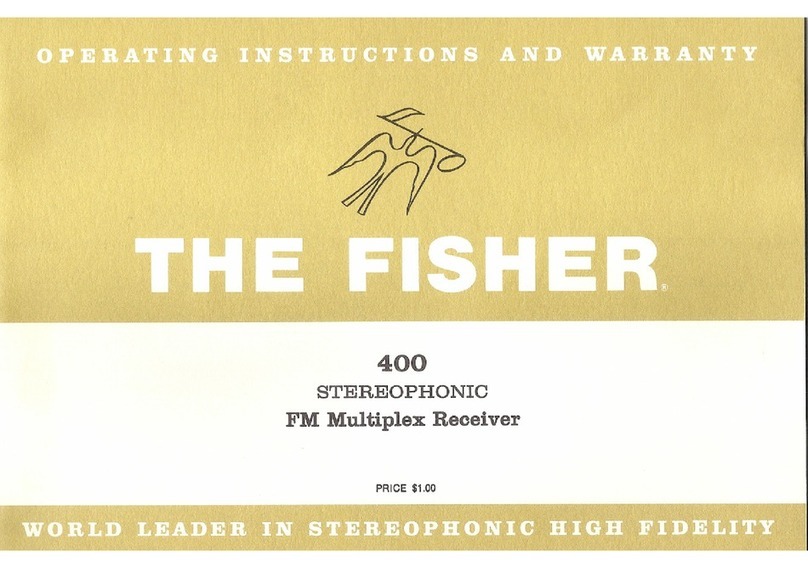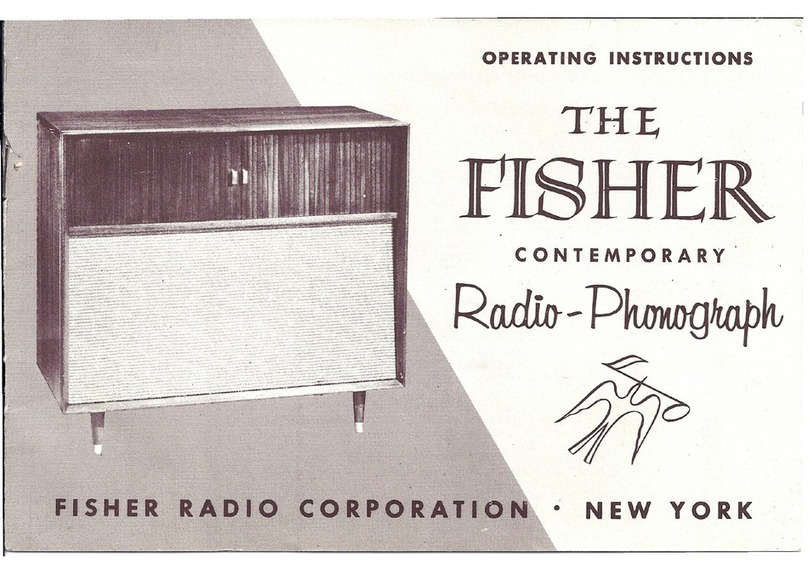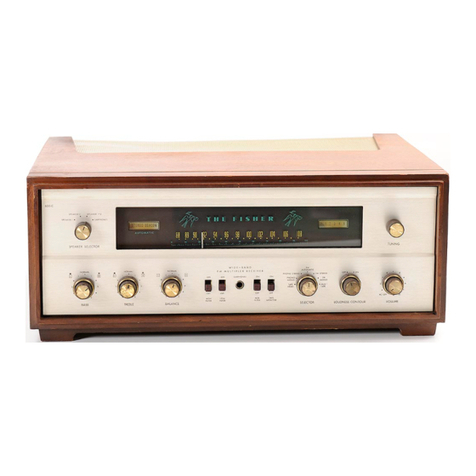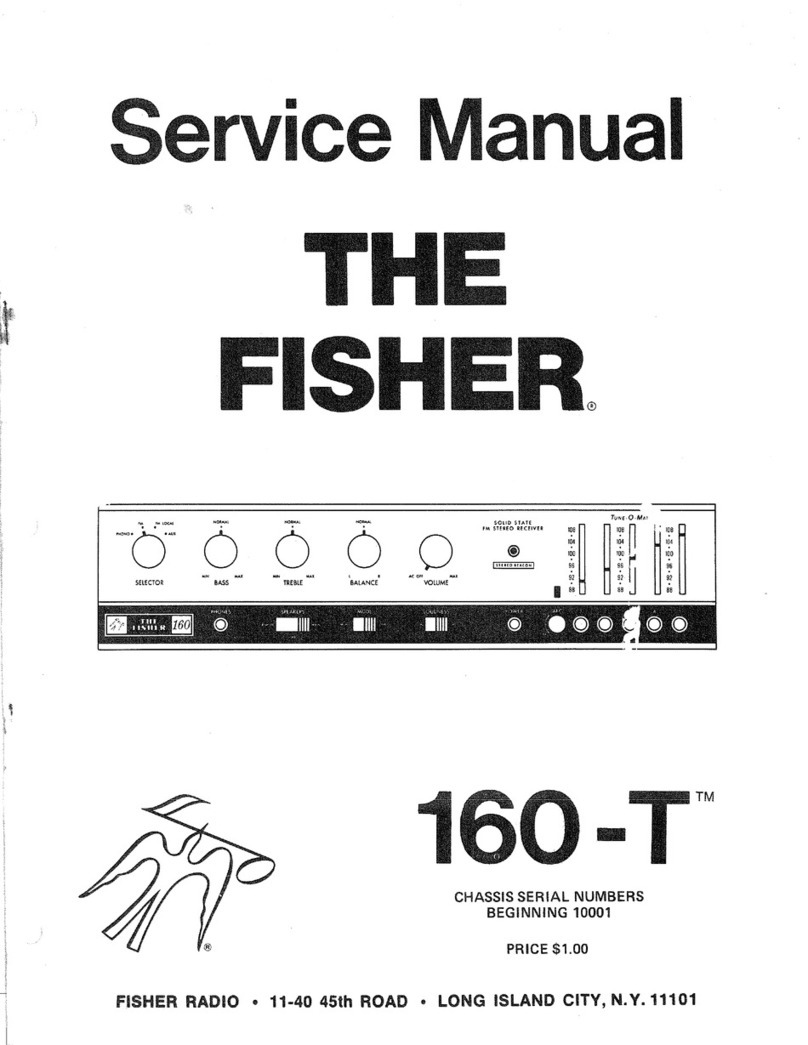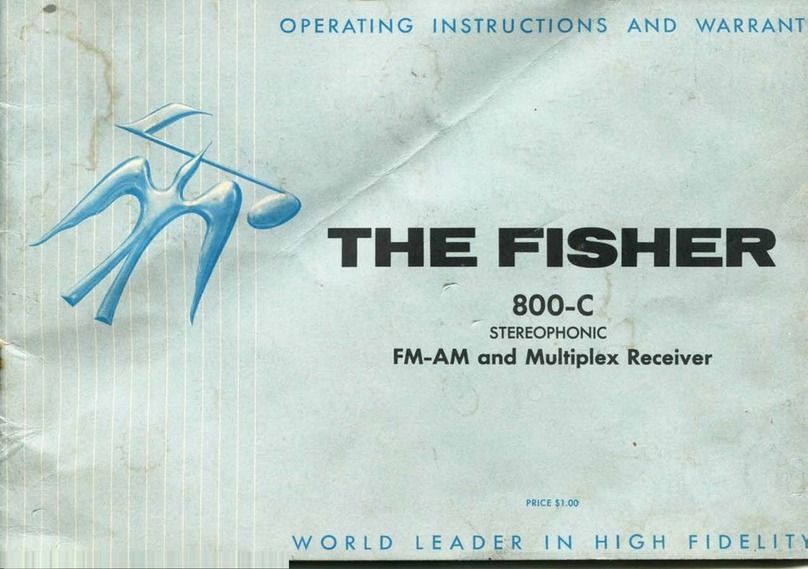I
ITH
your
purchase
of
a
FISHER
in\trument
you have
com
-
w
pleted
a
chain
of
events
that began
niany
nionths
ago,
in
our
rewnrch
Inhoratories.
For
it is there that
thc
basic concept
of
the
equipment you
have
just
acquired
came
into
being
-
its
appearance.
its
functions,
its
quality
of
performance.
its
convenience
of
use.
But
the end
step
-
your
purchase
-
is
merely
;i
beginning.
A
door
has
now
opened,
for
you
and
your family,
on
virtually unlimited
years
of
musical
enjoyment.
Recognizing
that
one
of
the
keys
to
pleasurable ownership
is
reliability,
we
have
designed
this instru
-
ment
to
give
long
and
trouble
-
free
service.
In
fact, instruments
we
made
over twenty
-
three
years
ago
are
still
in
use
today.
Remember
always
that
we
want
this equipment
to
give
you the
best
performance
of
which
it
is
capable.
Should
you
at any time need
our
assistance
toward
that objective,
please
write me
personally.
AN
IMPORTANT
SUGGESTION
Many
hours
have
been
spent
by
our
engineers
*and
technical
writers
to
create
this
instruction
book
for
your
guidance
and
enjoyment.
If
you
want
the
musr
out
of
your
FISHER, there
is
only
one
way
to
obtain
it.
With the
equipment
before
you,
please
read
this
book
-
let carefully.
It
will
be
time
well spent!
.
Fourider
and
President
1937
1931
1931
1938
1938
1939
1939
1939
1945
1948
1949
1952
1952
1953
First
high
-
fidelity sound systems featuring a
beam
-
power amplifier, inverse feedback, acous-
tic speaker compartments (infinite baffle and
bass reflex) and magnetic cartridges.
First exclusively high fidelity TRF tuner, featur
-
ing broad-tuning
20,000
cycle fidelity.
First two-unit high fidelity system with separate
speaker Prtclosure.
First coaxial speaker system.
First high fidelity tuner with amplified
AVC.
First Dynamic Range Expander,
First 3
-
Way Speaker in a high fidelity system.
First Center-of-Channel Tuning indicator.
First Preamplifier
-
Equalizer with selective pho
-
nograph equalization.
First Dynamic Range Expander with feedback.
First FM
-
AM Tuner with variable
AFC.
First 50-Watt, all
-
triode amplifier.
First self
-
powered Master Audio Control.
First self
-
powered, electronic sharp-cut-off filter
system for high fidelity use.
-
Milestones
In
the
History
of
High
Fidelity
Reproduction
1953
1953
1954
1954
1955
1955
1955
1956
1956
1956
1956
1956
First
Universal Horn
-
Type Speaker Enclosure for
any room location and any speaker.
First FM
-
AM Receiver with a Cascode Front End.
First
low
-
cost
electronic Mixer-Fader.
First moderately
-
priced, professional
FM
Tuner
with TWO meters.
First Peak Power Indicator
in
high fidelity.
First Master
Audio
Control Chassis with five-
position mixing facilities.
First correctly equalized, direct tape
-
head mas
-
ter audio controls and self
-
powered preamplifier.
First
to
use Power Monitor in a home amplifier.
First All-Transistorized Preamplifier
-
Equalizer.
First dual dynamic limiters in an FM tuner for
home use.
First Performance Monitor in
a
high quallty
amplifier for home use.
First FM
-
AM tuner with TWO meters.
1958
1959
1959
1959
7
960
1960
1960
1960
1960
First Stereophonic Radio-Phonograph with
Mag
netic Stereo Cartridge.
First high
-
quality Stereo Remote Control System.
First complete Stereophonic FM
-
AM Receiver
(FM-
AM
tuner, audio control, 40
-
watt amplifier).
First high
-
compliance plus high-efficiency free-
piston speaker system.
First
to
use
MicroRay for
FM
tuning
and as a
Recording Audio Level Indicator.
First complete stereo
FM
-
AM
receiver with
60-
I
watt power amplifier and new
7591
output tubes.
Smithsonian Institution,Washington,
D.C.,
accepts
for
its
collection America’s first commercially
manufactured high fidelity radio-phonograph,
made
by
Avery
Fisher
in
1937.
First reverberation device.
for
use in highfidelity
equipment
-
The Fisher Dynamic Spacexpander.
First stereo tuner with MicroTune.
I
I
1956
First complete graphic response curve indicator
1960
First FM tuner with six
IF
stages.
1960
First
FM
tuner with five limiters.
1957
First Golden Cascode FM Tuner,
1960
First front panel antenna selector switch,
72
-
300
1957
First
MicroRay Tuning Indicator. ohm, Local-Distant positions.
for bass and treble.


